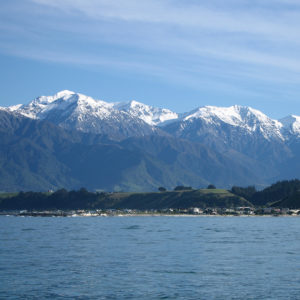It seems that yellowfin tuna are not gone forever from New Zealand waters. Dare we hope that this season is just the start of their return, or is this just a painful reminder of the superb fishery that has been lost?
The Bay of Plenty was once our yellowfin ‘tuna capital’ over summer. For most years in the 1980s and 1990s the Whakatane Sportfishing Club alone would record over 400 yellowfin per season, but a few years ago the famous Whakatane Tuna Tournament had to change its name. The word ‘tuna’ was removed from the title because prized yellowfin cannot be caught any more.
Despite great prizes on offer, 2014 was the 5th year running that not a single yellowfin was landed in the tournament.

Tuna stocks in the western Pacific are highly migratory and their abundance relies on effective management and good fishing practices across the entire Pacific. Bigeye, yellowfin skipjack and albacore tuna caught in NZ waters migrate from spawning grounds in the tropics, where more than 6,000 industrial fishing vessels are licensed to fish for tuna in the western and central Pacific Ocean. Fishing boats have flooded into this area over the last 20 years as stocks have declined in other oceans.
Yellowfin tuna is now on the brink of overfishing.
As the western and central Pacific Ocean is fished down, the tuna population contracts, affecting regions on the edge of the tuna’s natural range- like NZ.
Among the issues impacting on tuna is the bycatch of juvenile yellowfin by purse seine vessels using fish aggregating devices (FADs) in tropical waters. According to the International Seafood Sustainability Foundation, 15-20% of the catch from purse seiners fishing on FADs is made up of undersized tunas, including juvenile yellowfin and bigeye.
In one study the average fork length of yellowfin caught around FADs was 50 cm, compared with an average of 130 cm in unassociated purse seine sets. Last year the scientific committee recommended reducing fishing mortality from fisheries that take juveniles, with the goal to increase to yields and reduce any further impacts on the spawning potential.
So, is it better international management, increased spawning success or favourable oceanographic conditions that have helped yellowfin reappear in 2015? It is probably too early to speculate on the reasons for their reappearance in New Zealand, but in reality it is probably a combination of all three factors.
Management:
Since 2009 the Western and Central Pacific Fisheries Commission have banned the use of Fish Aggregation Devices (FADs) by purse seine vessels for three or four months a year, in international waters, to help protect the juvenile bigeye and yellowfin tuna from being taken as bycatch in the skipjack fishery. Also, some distant water fishing nations have reduced the number of longline vessels fishing for bigeye and yellowfin.
Commercial catch in the SW Pacific, south of 10 ° S Latitude, has been stable, without the large increases seen in other regions of the Pacific.
The New Zealand commercial catch of yellowfin was never large and it collapsed at the same time as the recreational fishery.
Recruitment:
Yellowfin are a remarkably productive species. Most yellowfin are mature by the time they are two or three years old and seem to spawn whenever the water temperature is above 26° C. In tropical waters yellowfin spawn year round.
Nature has a way of making the most of favourable conditions and we may be benefiting from a year or two of good recruitment.
Oceanographics:
There have been good patches of oceanic water and catches in January 2015. So far this season there has also been some small marlin (60 to 80 kg) and small bigeye tuna caught by recreational fishers. It seems that these fish are
venturing further south than usual this season. Certainly, they are not here every year. In the 1990s the best yellowfin seasons were warmer than average.
Data:
The data collected by New Zealand Sport Fishing Council affiliated clubs at their weigh stations has proven to be a valuable record of the size and number of yellowfin and billfish caught in the recreational fishery.
Recommendation:
If you are lucky enough catch a yellowfin tuna please weigh it in or tag and release it so it is recorded.





